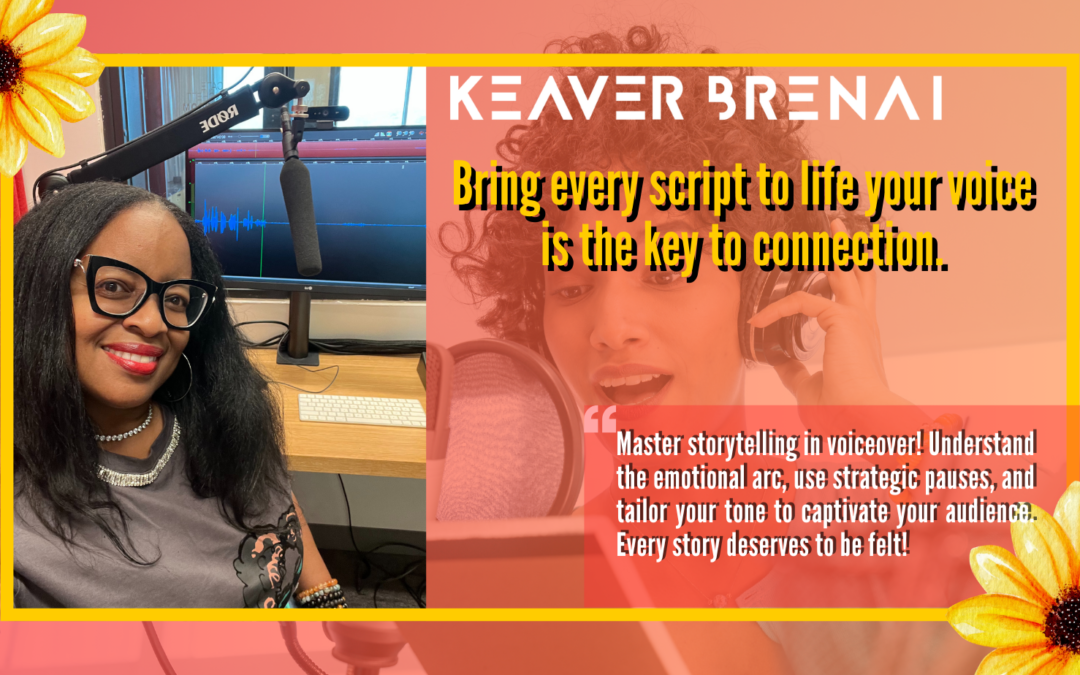Every Script Has a Story Waiting to Come Alive Through You
Every script has a story waiting to come alive through you. Storytelling is not just about reading words it’s about breathing life into them. It’s about understanding the heart of the story and delivering it in a way that makes the audience feel something deep within their core. As Robert McKee said, “Storytelling is the most powerful way to put ideas into the world today.”
That’s the magic of voiceover work. The best scripts aren’t just heard, they’re felt. The tone, the rhythm, the pauses they all matter. Mastering the emotional flow of a story is what separates a good voiceover artist from a great one.
If you want to become a masterful storyteller, here’s how you can elevate your craft:
1. Understand the Story’s Emotional Arc
Before you even begin recording, you need to connect with the script’s emotional journey. Every story has highs and lows, a beginning, middle, and resolution. Understand the core message and the emotional beats:
- Is the story meant to inspire?
- Does it aim to create urgency or evoke nostalgia?
- How should the audience feel by the end?
Mastering the emotional arc allows you to adjust your tone, pace, and energy to guide the listener through the journey. When you align your delivery with the emotional pulse of the script, you create a connection that resonates long after the last word is spoken.
2. Use Pauses Effectively to Create Tension and Impact
Pauses are powerful. They create space for the audience to process what they’ve just heard and anticipate what’s coming next. Strategic silence adds weight to your words, allowing the emotional core of the story to land with impact.
![]() When delivering an important line, try pausing briefly before or after to let the words sink in.
When delivering an important line, try pausing briefly before or after to let the words sink in.
![]() A pause between two contrasting emotions (joy and sadness, excitement and fear) amplifies the emotional shift.
A pause between two contrasting emotions (joy and sadness, excitement and fear) amplifies the emotional shift.
![]() Too many words without pauses can overwhelm the listener; give them time to feel.
Too many words without pauses can overwhelm the listener; give them time to feel.
Great storytelling is not just about what you say, it’s about knowing when to say nothing.
3. Research Your Audience to Tailor Your Tone and Style
Your audience shapes how you tell the story. A corporate training video demands a different tone than a heartfelt PSA. Research who your audience is and what matters to them:
- Are they looking for reassurance or motivation?
- Do they respond better to an authoritative tone or a conversational style?
- What emotional triggers resonate with them?
When you know your audience, you can craft a delivery that speaks to them, not just at them. It’s about creating a sense of intimacy and understanding so they feel like the story is unfolding just for them.
Guiding clients to uncover the emotional depth of their stories fuels my creativity. When I help them find the right tone, the right rhythm, and the right pauses, I watch their stories transform from flat words on a page into a powerful rhythm, and pauses, I watch their stories transform from flat words on a page into powerful messages that touch hearts. That’s the beauty of storytelling messages that touch hearts. That’s the beauty of storytelling; it’s not just about the script; it’s about the soul behind it.
Storytelling is not just about reading words it’s about breathing life into them. Mastering storytelling in voiceover is about more than just speaking clearly—it’s about emotional connection. Understand the story’s emotional arc, master the power of pauses, and tailor your delivery to the audience. That’s how you breathe life into a script.
Because every story deserves to be felt.
Ready to elevate your storytelling skills? Let’s uncover the heart of your message and craft a delivery that resonates. Reach out today to start your storytelling journey with Keaver Brenai.
Call to Action: Remember to wash your hands. And mask up. Follow me for more great tips!
Subscribe to our blog here for more tips and information.



Recent Comments